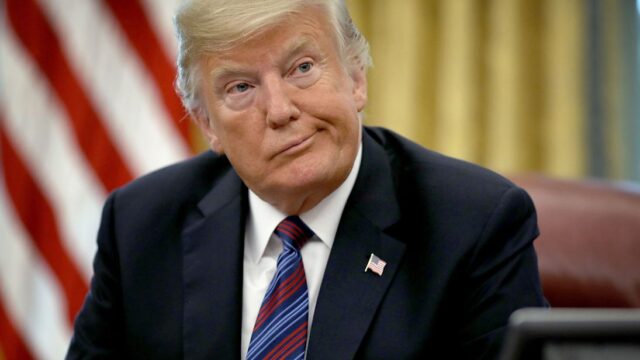Tomahawks, Nuclear Gamble and Trump’s Farewell to MAGA

Sending Tomahawk missiles to Ukraine would, in effect, be equivalent to starting a nuclear war. Ukraine simply does not have the technology or infrastructure needed to launch such missiles into Russian territory. Because of these technical limitations, only American forces could actually operate them—meaning that the United States would, in practice, be entering a direct and open war with Russia.
If one nuclear power attacks another, the result is by definition a nuclear war. Moreover, Tomahawk missiles are capable of carrying nuclear warheads. There would be no way to verify whether these missiles are armed with nuclear payloads, and there would be no time to confirm it either. If any of them were to strike Russian territory, Moscow would almost certainly retaliate with strategic nuclear weapons. That would mean the conflict was no longer between Russia and Ukraine alone. Russia is already at war with Ukraine in an undeclared sense—but not with the United States.
If President Trump truly seeks peace, he must avoid such reckless decisions. Yet he has repeatedly shown inconsistency—saying one thing and doing another. It is difficult to grasp the logic behind his actions, which often seem erratic and contradictory.
As the president of the United States, the world’s leading military power, his words cannot simply be dismissed. Trump remains a serious political figure, but the mixed and often irrational messages he sends to both allies and rivals are deeply worrying.
The situation is already dangerously unstable. Because of Trump’s unpredictable behavior, the world today stands on the edge of a potential nuclear catastrophe. The contradiction is striking: how can he praise President Putin while at the same time threatening to send missiles against Russia?
Perhaps this reflects a familiar pattern in American business culture—an aggressive bargaining style that relies on pressure and brinkmanship. While such tactics might work in negotiations over trade or finance, applying them to nuclear diplomacy is profoundly irresponsible.
Even if Trump’s statements are only meant as threats, in such a tense atmosphere they could easily be misinterpreted as genuine intentions. The reaction to such a misunderstanding could be catastrophic. His rhetoric is, therefore, extremely dangerous.
The “Make America Great Again” (MAGA) movement, from the beginning, seemed to recognize the idea of a multipolar world. It positioned itself against globalist interventionism and the policies of the liberal elite that dominated Washington before. Yet Trump has drifted away from this original stance.
If he had remained true to MAGA’s principles, it might have been possible to limit America’s claims to global dominance and build a more constructive relationship between Washington and Moscow. The meeting in Anchorage once offered a glimpse of how such progress could be achieved.
That opportunity was real, and it should not be forgotten. For a brief moment, the United States seemed close to stepping back from its universal ambitions and acknowledging a multipolar order. But Trump hesitated. He voiced support for this direction, then immediately reversed course.
Such inconsistency explains why his policies often contradict one another. One day, he claimed to have solved the tariff issue with China; the next, he threatened to impose 100 percent tariffs. This is incoherent politics.
When the issue is trade, such inconsistency is already damaging. But when it concerns nuclear confrontation, it becomes far more serious—potentially irreversible. The world is now in an extremely fragile and volatile state.
The unipolar world is fading, and multipolarity is beginning to take shape. Yet neither process has reached a point of no return. The balance of power remains delicate: multipolarity grows stronger each day, but uncertainty still prevails.
From the outset, MAGA ideologues envisioned improving U.S.–Russia relations and reducing American military, political, and financial support for Ukraine. At the same time, however, they intended to maintain economic competition with China, including the nationalization of some Chinese assets within the United States.
In that sense, MAGA’s approach to multipolarity was never entirely consistent. It promised friendlier relations with Russia but took an increasingly confrontational stance toward China.
Today, there is no political party, movement, or major force in the United States that fully accepts multipolarity while seeking friendly relations with Russia, China, India, the Islamic world, and Africa. In this regard, MAGA’s original rejection of globalization and liberalism was a promising start—it at least pointed in a direction that could lead to more rational relations among great powers.
That idea once offered hope of a balanced relationship between major civilizations such as the United States, Russia, and China—based on realism rather than ideology.
However, Trump no longer follows that path. He operates without a coherent strategy or clear worldview, which only deepens global instability. His administration has displayed hostility toward Russia, China, and even India—a nation long considered a U.S. ally.
The only consistent loyalty Trump seems to maintain is toward Israel and Prime Minister Netanyahu. His unwavering support for them shows that he remains a committed Zionist. In all other areas of international politics, he is inconsistent and unpredictable.
Under these conditions, it is difficult to imagine stable or strategically balanced relations among the United States, Russia, China, and the European Union. The world has entered a period of disorder. If humanity is to build a fair and truly multipolar system, this struggle must first be won.
Editor: Yangwen
https://alexanderdugin.substack.com/p/tomahawks-nuclear-gamble-and-trumps
